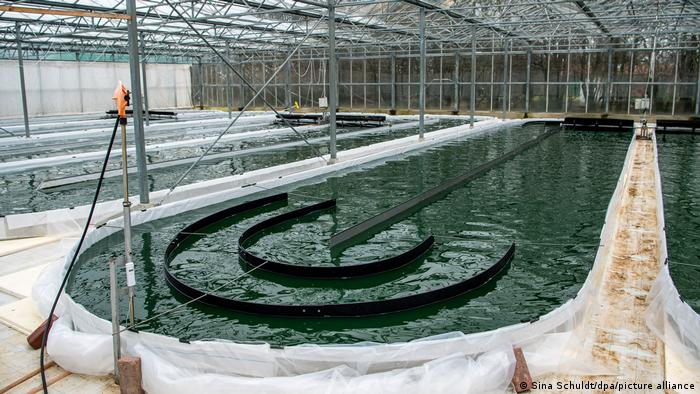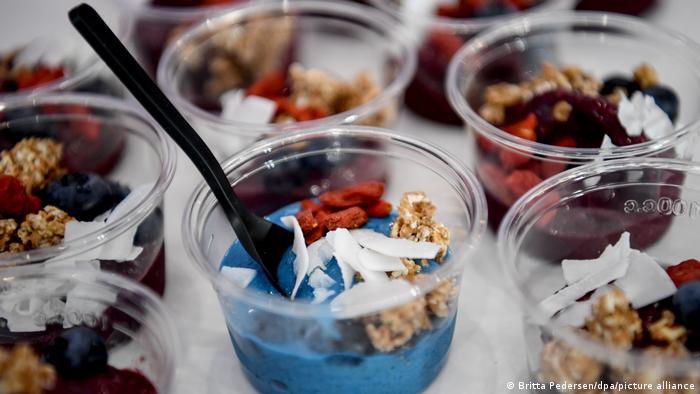
Until recently, Ulrich Averberg of West Germany Ahlen was a classic farmer specializing in agricultural and livestock production. However, he is still engaged in growing corn and raising pigs, of which he owns 800 pieces. However, two years ago, Averberg chose another direction – creating the blue-green microalgae spirulina (Arthrospira), which is actually a cyanobacterial biomass. But what did a seasoned entrepreneur find attractive in such a marginal business?
spontaneous decision
The natural habitat of microalgae with spiral filaments is the warm freshwater reservoirs of Asia, Africa, South and Central America. But for some time now, spirulina, recognized by the World Health Organization (WHO) as the most useful plant on Earth and which has become the main food for astronauts, is also cultivated in Europe. And in Germany, even the German cooperative for the cultivation of algae (Deutsche Algen Genossenschaft, DAG) was founded, bringing together 30 entrepreneurs so far. Ulrich Averberg is the chairman of the board of this organization.
The entrepreneur Ulrich Averberg
“About four years ago, I accidentally walked into a lecture about the health benefits of microalgae and technologies for growing them in greenhouses. And I just had the idea of taking over a business like this. Useful Ingredients Contains iron, vitamin E, B vitamins and beta-carotene It is also rich in magnesium, manganese and sodium Not to mention one of the best sources of protein: when dried, spirulina contains 60 to 70 percent protein with a complete set of essential amino acids. That’s about the same as in eggs, and twice as much as in meat”, lists Ulrich Averberg in an interview with DW.
The businessman managed to convince the family of the viability of a new business idea, as well as the bank, which granted him a loan. His application for a permit to build a greenhouse, a new home for millions of single-celled microalgae, was also approved. And gradually Averberg and his family started breeding algae.
“Processing microalgae in Germany instead of importing these products from Asia saves a lot of resources, as there is no need for time-consuming, energy-intensive and expensive transport,” emphasizes Averberg.
From ordinary farmer to aqua farmer
The height of the pools in which Ulrich Averberg grows spirulina microalgae is only 15 centimeters. But the water is so dark that it seems to descend several meters. Ten tanks with a total volume of 330 cubic meters are located in a greenhouse with an area of 2500 square meters. The erection of the structure and construction work took just 14 days. You can dismantle the greenhouse in even shorter time. So if Averberg had given up on his business, removed the greenhouse and concrete foundation again, and digged up the soil with a plow, he could, as before, cultivate the part of the field that the farm now stands on. But the entrepreneur doesn’t even think about it.

Pools in which spirulina is bred
“Growing microalgae has become a very interesting and enjoyable place to work for me. In addition, we can further develop the technologies for growing spirulina and we still have a lot of ideas that we definitely want to implement,” says Averberg.
This begs the question: what is the difference between freshwater microalgae and seaweed that we are all familiar with?
“For most people, when they mention algae, they associate seaweeds – the so-called macroalgae, which can be captured and taken out of the water. We produce microalgae. They cannot be “captured”, they must be filtered with special equipment. a special production” – explains the entrepreneur.
production resources
Spirulina reproduces very quickly: under the right conditions, this process takes only two to four weeks. To do this, according to Averberg, microalgae must be constantly “fed” – adding nitrates, phosphorus and trace elements to the water where they are raised. But solar energy is crucial: microalgae need lots of light to grow.

Spirulina powder and smoothie
“However, it is not possible to supply as much light as the sun with electricity. It is very expensive and not ecologically correct. That is why our production does not work in winter”, emphasizes the businessman.
When harvesting microalgae, water is pumped from the tank to the filter belt. After the water is drained, the filtered blue-green spinach-like biomass is fed into a special container and from there it is pumped, batch by batch, onto a baking sheet lined with parchment paper. The long strips of seaweed are then dried in an oven.
useful supplement
As a rule, after drying, spirulina is ground into a powder or used to make dry tablets and capsules, which are consumed separately or as a food supplement in foods, including animal feed. Due to its chemical composition, algae have antioxidant, anti-inflammatory, depurative and antiallergic effects on the body. Using this product also slows down the aging process. And the presence of the blue pigment slows down the growth of cancer cells.

Spirulina dietary supplement products
Ulrich Averberg’s kids weren’t thrilled with the dinner experiment, in which their parents served mashed potatoes with seaweed, but now a few green beans on a plate are no longer an issue for them, laughs the businessman. According to him, spirulina now has a prominent place on the table in his house during the meal.
“We add, along with seasonings, to almost all dishes and even baked goods. But we cannot forget that it is a protein bomb, so to avoid protein intoxication, it is important not to overdo it,” he said. German entrepreneur and staunch development advocate warns microalgae entrepreneur Ulrich Averberg.
Source: DW
Lori Barajas is an accomplished journalist, known for her insightful and thought-provoking writing on economy. She currently works as a writer at 247 news reel. With a passion for understanding the economy, Lori’s writing delves deep into the financial issues that matter most, providing readers with a unique perspective on current events.